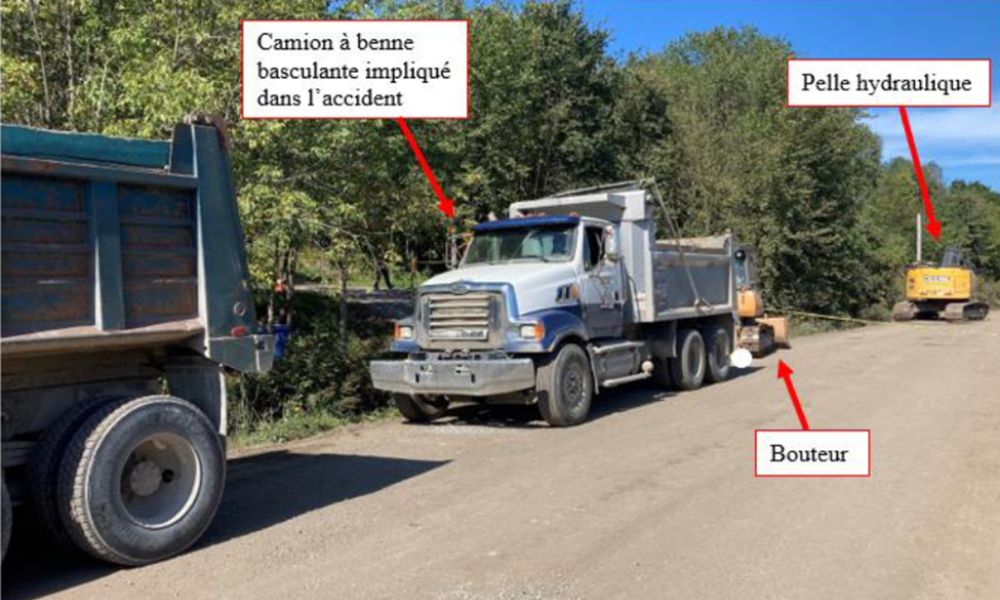CNESST releases report into incident that saw worker pinned between dump truck and bulldozer

The Commission des normes, de l'équité, de la santé et de la sécurité du travail (CNESST) has released its investigation report into the fatal accident that occurred at a construction site in Chelsea, Quebec, on September 11, 2023. The report reveals a lack of communication and poor site management led to the tragic death of a worker from Construction FGK Inc.
On the morning of the accident, a worker from Construction FGK Inc. was refilling the diesel tank of a crawler bulldozer, which was parked approximately five meters behind a dump truck. The truck driver, seeing a hydraulic excavator turn in his direction, mistakenly believed he was signaled to join the excavator operator. After checking his mirrors and failing to see the worker or the bulldozer, the driver began reversing the truck. The worker was struck and crushed between the truck and the bulldozer. Emergency services were called, but the worker was pronounced dead at the scene.

The CNESST immediately ordered a halt to all work involving heavy vehicle reversing manoeuvres on the site. To resume work, Construction FGK Inc. was required to comply with subsection 2.8 of the Safety Code for the Construction Industry (CSEC) and develop a safe work method for managing and coordinating heavy vehicle manoeuvres.
The CNESST identified two primary causes for the accident:
- Lack of management of reversing manoeuvres: The dump truck, operated by Ronald O'Connor Construction Inc., performed a reversing manoeuvre without proper oversight, resulting in the worker being struck and crushed between the truck and a parked crawler bulldozer. "The lack of management of the reversing manoeuvres resulted in the dump truck performing a reversing manoeuvre while a worker was present in the danger zone and in the truck's reversing path," states the report.
- Deficient work organization and communication: The investigation highlighted significant deficiencies in the work organization and communication during the start of the shift. "The work organization associated with the start of activities at the beginning of the shift was deficient, particularly with regard to coordination and communication," the report notes.
To prevent similar accidents in the future, the CNESST recommends several safety measures:
- Plan vehicle traffic: Eliminate or restrict reversing manoeuvres and implement safety measures to protect workers on site.
- Traffic plans: Develop and display a traffic plan on sites with ten or more workers, updating it as necessary to reflect changes.
- Communication of safety measures: Ensure all personnel are informed of site safety measures and traffic rules.
- Marking work areas: Clearly mark taxiways, setbacks, and work areas.
- Use of flagmen: Employ site flagmen to direct reversing manoeuvres in areas where people are present if no marked area is designated for such manoeuvres.
To raise awareness and improve safety standards, the CNESST will disseminate the investigation findings to various industry associations, including the Association de la construction du Québec (ACQ) and the Association des constructeurs de routes et grands travaux du Québec (ACRGTQ). The report will also be shared with training institutions offering Construction Equipment Operation or Truck Transport programs to educate future workers on safety protocols.





